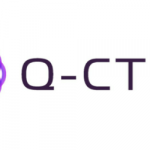Building a Quantum Network One Node at a Time

(EurekaAlert) Researchers at the University of Rochester and Cornell University have taken an important step toward developing a communications network that exchanges information across long distances by using photons, mass-less measures of light that are key elements of quantum computing and quantum communications systems.
The research team has designed a nanoscale node made out of magnetic and semiconducting materials that could interact with other nodes, using laser light to emit and accept photons.
The development of such a quantum network–designed to take advantage of the physical properties of light and matter characterized by quantum mechanics–promises faster, more efficient ways to communicate, compute, and detect objects and materials as compared to networks currently used for computing and communications.
Two major challenges confronted the researchers in creating the device.
One was creating an inert environment in which to work with the highly reactive CrI3. This was where the collaboration with Cornell University came into play. “They have a lot of expertise with the chromium triiodide and since we were working with that for the first time, we coordinated with them on that aspect of it,” Vamivakas says. For example, fabrication of the CrI3 was done in nitrogen-filled glove boxes to avoid oxygen and moisture degradation.
The other challenge was determining just the right configuration of pillars to ensure that the holes and spin valleys associated with each pillar could be properly registered to eventually link to other nodes.



















